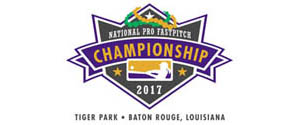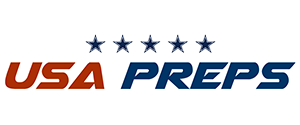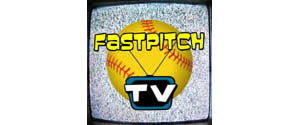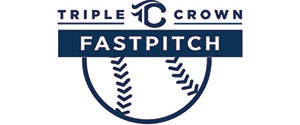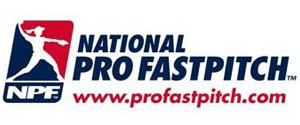The Umpire Corner
Another Obstruction Question
30 posts
• Page 2 of 3 • 1, 2, 3
GIMNEPIWO - The specific exceptions to not being called out between the bases where the OBS occurred have been listed and this is not one of them. The rule also states the runner may be called out beyond the base he/she would have achieved, which he/she is not in your situation.
- topper
- Posts: 82
- Joined: Wed Dec 17, 2008 7:49 pm
topper wrote:GIMNEPIWO - The specific exceptions to not being called out between the bases where the OBS occurred have been listed and this is not one of them. The rule also states the runner may be called out beyond the base he/she would have achieved, which he/she is not in your situation.
I see that now ... I was not reading properly 8-5-B-1-a and putting an 'or' where 'and' is... Which would have made the exception read ' when an obstructed runner,after the obstruction, safely obtains the base they would have been awarded, in the Umpires judgemnet had there been no obstruction ( or ) there is a subsequent play on a different runner. '
Glad for the clarification !
"For the strength of the pack is the wolf, the strength of the wolf is the pack" Rudyard Kipling
-

GIMNEPIWO - Posts: 4339
- Joined: Sat Sep 06, 2008 6:58 am
- Location: Between Rock & Hard Place
To expand on that point ... R1 on 3rd leading off on the pitch, F2 tries to pick her off ... As R1 in heading back to 3rd, F5 is guilty of OBS and misses the ball ... Ball goes into left field and is picked up by F7 ... R1 runs home, F7 throws to F2 who makes the tag on R1 ...
So, we put R1 back on third because she can't be thrown out between the bases where she was obstructed and there was no play made on another runner.
So, we put R1 back on third because she can't be thrown out between the bases where she was obstructed and there was no play made on another runner.
"For the strength of the pack is the wolf, the strength of the wolf is the pack" Rudyard Kipling
-

GIMNEPIWO - Posts: 4339
- Joined: Sat Sep 06, 2008 6:58 am
- Location: Between Rock & Hard Place
GIMNEPIWO wrote:To expand on that point ... R1 on 3rd leading off on the pitch, F2 tries to pick her off ... As R1 in heading back to 3rd, F5 is guilty of OBS and misses the ball ... Ball goes into left field and is picked up by F7 ... R1 runs home, F7 throws to F2 who makes the tag on R1 ...
So, we put R1 back on third because she can't be thrown out between the bases where she was obstructed and there was no play made on another runner.
That would be correct. You will run into people who want to score the runner, but the OBS did not deter, impede or hinder the runner from advancing to the plate.
- MTR
- Posts: 2317
- Joined: Thu Jan 03, 2008 5:21 am
MTR wrote:GIMNEPIWO wrote:To expand on that point ... R1 on 3rd leading off on the pitch, F2 tries to pick her off ... As R1 in heading back to 3rd, F5 is guilty of OBS and misses the ball ... Ball goes into left field and is picked up by F7 ... R1 runs home, F7 throws to F2 who makes the tag on R1 ...
So, we put R1 back on third because she can't be thrown out between the bases where she was obstructed and there was no play made on another runner.
That would be correct. You will run into people who want to score the runner, but the OBS did not deter, impede or hinder the runner from advancing to the plate.
I had that part because she was impeded heading back to third ... But where I was confused was that I HAD thought that once R1 made it back to third after the OBS ( the base she was protected too ) , then the OBS was off and her running home was another play ... thus, making her liable to be put out.
Glad for these forums ...
"For the strength of the pack is the wolf, the strength of the wolf is the pack" Rudyard Kipling
-

GIMNEPIWO - Posts: 4339
- Joined: Sat Sep 06, 2008 6:58 am
- Location: Between Rock & Hard Place
MTR wrote:GIMNEPIWO wrote:To expand on that point ... R1 on 3rd leading off on the pitch, F2 tries to pick her off ... As R1 in heading back to 3rd, F5 is guilty of OBS and misses the ball ... Ball goes into left field and is picked up by F7 ... R1 runs home, F7 throws to F2 who makes the tag on R1 ...
So, we put R1 back on third because she can't be thrown out between the bases where she was obstructed and there was no play made on another runner.
That would be correct. You will run into people who want to score the runner, but the OBS did not deter, impede or hinder the runner from advancing to the plate.
If you run across a softball code patterned after that big diamond game played with the little ball,
A constitution of government, once changed from freedom, can never be restored. Liberty once lost is lost forever.
-

Crabby_Bob - Posts: 209
- Joined: Sun Jan 25, 2009 11:36 am
Crabby_Bob wrote:MTR wrote:GIMNEPIWO wrote:To expand on that point ... R1 on 3rd leading off on the pitch, F2 tries to pick her off ... As R1 in heading back to 3rd, F5 is guilty of OBS and misses the ball ... Ball goes into left field and is picked up by F7 ... R1 runs home, F7 throws to F2 who makes the tag on R1 ...
So, we put R1 back on third because she can't be thrown out between the bases where she was obstructed and there was no play made on another runner.
That would be correct. You will run into people who want to score the runner, but the OBS did not deter, impede or hinder the runner from advancing to the plate.
If you run across a softball code patterned after that big diamond game played with the little ball,type A obstruction would award at least one advance base.
And the automatic base once used in NFHS actually caused some umpires to NOT call the OBS on F3 when blocking 1B on a pick-off. That meant more players dropped that knee in front of the base. Could you imagine that happening today with the metal spikes?
- MTR
- Posts: 2317
- Joined: Thu Jan 03, 2008 5:21 am
MTR wrote:Crabby_Bob wrote:MTR wrote:GIMNEPIWO wrote:To expand on that point ... R1 on 3rd leading off on the pitch, F2 tries to pick her off ... As R1 in heading back to 3rd, F5 is guilty of OBS and misses the ball ... Ball goes into left field and is picked up by F7 ... R1 runs home, F7 throws to F2 who makes the tag on R1 ...
So, we put R1 back on third because she can't be thrown out between the bases where she was obstructed and there was no play made on another runner.
That would be correct. You will run into people who want to score the runner, but the OBS did not deter, impede or hinder the runner from advancing to the plate.
If you run across a softball code patterned after that big diamond game played with the little ball,type A obstruction would award at least one advance base.
And the automatic base once used in NFHS actually caused some umpires to NOT call the OBS on F3 when blocking 1B on a pick-off. That meant more players dropped that knee in front of the base. Could you imagine that happening today with the metal spikes?
I know we were speaking ASA ... But I see U-Trip 8-13-D has different wording that would allow that advancing or retreating base runner to be called out because there is a 'subsequent play' and it does not specify 'on another runner' .
"For the strength of the pack is the wolf, the strength of the wolf is the pack" Rudyard Kipling
-

GIMNEPIWO - Posts: 4339
- Joined: Sat Sep 06, 2008 6:58 am
- Location: Between Rock & Hard Place
Thanks for the great discussion about the extent of OBS protection. I believe many misunderstand it and I know I have had great umpires, i.e. ton's of ASA training, explain it to me differently.
I would like to understand the decision points of when OBS is in effect and when it is removed. On something closer to the original scenario.
Let's say BR1 did not really look like they were busting around the base hard headed for 2b, they were just lightly rounding, even almost stopped, when contact happened. BR1 then stands there for a few seconds. LF throws to 2b. BR1 takes two steps back and touches 1b. Then the overthrow. At this poing BR1 takes off for 2b, and is thrown out.
Based on discussion above, could umpire interpret that runner as not intending to go to 2b when obstruction occurred, so protected back to 1b? These are more questions as I try to understand how and when obstruction protection is put on, and when it is taken off.
I would like to understand the decision points of when OBS is in effect and when it is removed. On something closer to the original scenario.
Let's say BR1 did not really look like they were busting around the base hard headed for 2b, they were just lightly rounding, even almost stopped, when contact happened. BR1 then stands there for a few seconds. LF throws to 2b. BR1 takes two steps back and touches 1b. Then the overthrow. At this poing BR1 takes off for 2b, and is thrown out.
Based on discussion above, could umpire interpret that runner as not intending to go to 2b when obstruction occurred, so protected back to 1b? These are more questions as I try to understand how and when obstruction protection is put on, and when it is taken off.
-

AlwaysImprove - Premium Member

- Posts: 1723
- Joined: Mon Aug 17, 2009 9:27 am
AlwaysImprove wrote:Thanks for the great discussion about the extent of OBS protection. I believe many misunderstand it and I know I have had great umpires, i.e. ton's of ASA training, explain it to me differently.
I would like to understand the decision points of when OBS is in effect and when it is removed. On something closer to the original scenario.
Let's say BR1 did not really look like they were busting around the base hard headed for 2b, they were just lightly rounding, even almost stopped, when contact happened. BR1 then stands there for a few seconds. LF throws to 2b. BR1 takes two steps back and touches 1b. Then the overthrow. At this poing BR1 takes off for 2b, and is thrown out.
Based on discussion above, could umpire interpret that runner as not intending to go to 2b when obstruction occurred, so protected back to 1b? These are more questions as I try to understand how and when obstruction protection is put on, and when it is taken off.
As to ASA, NCAA, and NFHS/PGF:
There are two separate forms of "protection" to an obstructed runner. First, the runner is protected to whatever base the umpire judges the runner would have reached if not obstructed. This judgment is NOT tied to a runner's attempt to reach that base, or failure to attempt to advance; at the end of play, unless the runner violates a very short list of rules (interferes, misses a base, leaves a base early on fly ball), the runner is to be awarded THAT base. Nor do subsequent plays or misplays prior to "all play has ended" limit or increase that award; if the obstructed runner never gets that far, it is to be awarded. If the runner attempts beyond that base (except if also protected in the second form, too), the runner is in jeopardy, and protection has ended.
Second, the runner is protected one base in both directions from the point of the obstruction; and that obstruction, if rounding a base, can (and should) be judged to have occurred on both sides of that base. If put out between these bases, the ball is dead, and the runner is placed on the base determined in the first part; it may be forward, it may be back. This protection ends ONLY with the same short list of violations noted above, or if the added exception of 1) has reached the judged base, AND 2) there is a play made on another runner, AND 3) the obstructed runner then attempts to advance after the play on the other runner, applies.
"When all play ends" is also not related to if/when the runner attempts to advance, even if she has initially stopped and is directed to attempt. Play ends when the ball is in the circle in pitcher possession and all runners have stopped advances, or if umpire calls time. Fragmented play attempts do not change this (as in a late attempt to advance); ALL play must be ended.
In all cases, BOTH forms of protection apply. Only if both forms of protection are ended as described above, or do not apply, or all play has ended, does the obstructed runner regain jeopardy.
-

UmpSteve - Premium Member

- Posts: 461
- Joined: Fri Aug 21, 2009 10:38 am
30 posts
• Page 2 of 3 • 1, 2, 3






